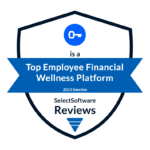More than half of Americans have delayed or skipped a medical procedure because of cost. Of those, 46% said that choice led to additional medical issues. Poor financial health makes people sick – and keeps them trapped in a cycle of illness. This isn’t just a problem for employees; it drives healthcare costs up for their employers, too.
To quantify how much financially stressed employees cost a Fortune 50 employer in terms of healthcare costs, Willis Towers Watson (WTW) analyzed about 107,000 of the Fortune 50’s employees. It found that:
- Fortune 50 employees with an annual income of $40,000 or less were most likely to experience high financial stress
- High financial stress employees had 40% higher medical costs than low financial stress employees
- High financial stress employees had 2x the average unplanned absences than low financial stress employees
Ultimately, employees with high financial stress cost the Fortune 50 employer:
- An additional $1,100 per employee in annual healthcare costs compared to employees with low financial stress
- An added $22 million in healthcare costs each year
How financial health and healthcare costs intersect
Employees experiencing high financial stress are more likely to have poor mental, physical, and emotional health. Financial stress is a root cause of behavioral health problems, which drive 41% of all healthcare spend. Long-term, chronic stress can lead to healthcare issues ranging from digestive problems to high blood pressure.
In turn, more health issues make people more financially vulnerable: the likelihood of financial problems increases with a greater number of chronic medical conditions.
Frontline employees make up about 70% of the U.S workforce and are more likely to be in poor financial health, compared to the broader population. This forces them to choose whether to go to the doctor and face the subsequent bills, or pay for other necessities including food and transportation. Their financial situation means they choose the latter. In turn, a medical issue that may have been resolved fairly inexpensively with primary care can lead to chronic illness, the need for costly emergency care, or even the inability to work.
In his book, “Poverty and the Myths of Healthcare Reform,” the late Dr. Richard Cooper estimated that poor financial health ultimately drives about 30% of healthcare costs. He explained that this is not because the financially vulnerable use more healthcare than those who are financially healthy out of choice. Rather, they are more likely to be in social circumstances that cause them to be in poorer health. Until these challenges are addressed, argued Cooper, healthcare costs will continue to climb.
Brightside delivers ROI and supports frontline employees’ holistic wellbeing
The Fortune 50 employer in the aforementioned study inspired the creation of Brightside Financial Care in 2018. Before Brightside, there was no employee benefit that employers could rely on to support the unique needs of frontline employees, whose financial priorities, goals, and challenges are different from the rest of the workforce. Traditional financial wellness approaches such as financial education, coaching and planning, and retirement-readiness solutions do not work for frontline employees. Their financial needs are focused on everyday money problems, are multifaceted, and are often, immediate.
Brightside Financial Assistants provide frontline workers and their families with personalized, non-judgmental support and real solutions that triage and address urgent needs and make it easy to take steps that improve their overall wellbeing, including financial health.
Brightside remains the only model built to improve frontline employee financial health while also delivering ROI for employers in the form of reduced healthcare costs, lower turnover, improved workplace safety, and more.
Schedule a demo to learn more about how your employees’ financial health impacts your healthcare costs.





